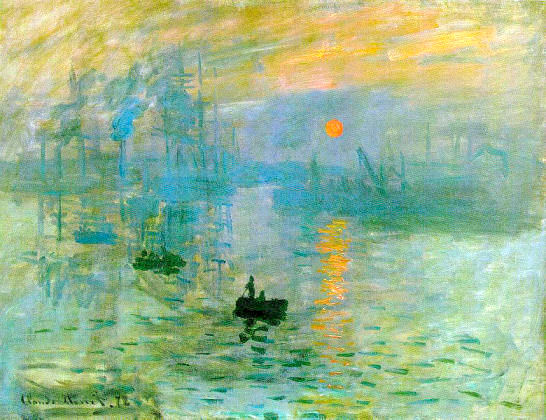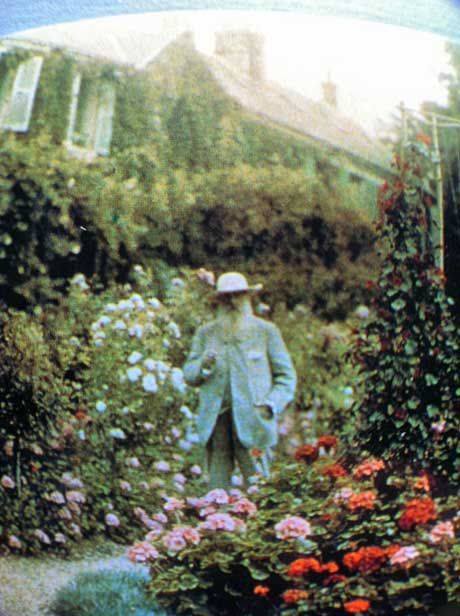
LIFE AS MYTH
![]()
JOURNAL
![]()
JOURNAL 2012
The seeds of wisdom
Leaning into the answer
![]()
SPRING 2012
Lessons from the lily pond
Color & meaning in lotus mythology
Color through an ever shifting glass
![]()
LIFEWORKS
![]()
ATLAS
![]()

SPRING 2012
A VISIONARY SUNRISE
Impression, Soleil Levant (Impression, Sunrise). Claude Monet. 1872. Musée Marmottan-Monet, Paris.
Monet in the garden at Giverny by Étienne Clémentel. 1917.
For me, a landscape does not exist in its own right, since its appearance changes at any moment; but the surrounding atmosphere brings it to life – the light and the air which vary continually. For me, it is only the surrounding atmosphere which gives subjects their true value.
Claude Monet
In the 1870's, after viewing Claude Monet's Impression, Sunrise, the Parisian art critic Louis Leroy wrote a satiric review which appeared in the Parisian newspaper Le Charivari. Leroy described the painting as little more than a sketch and coined the term "impressionism", intending it to be a pejorative of the work. The radical artists of this 19th Century art movement, however, embraced the term and, despite the lack of support from the traditional artistic establishment, the public began to appreciate Impressionism as the work of visionary pioneers.
Two art forms had a significant impact on French Impressionistic painting: Japanese block prints (Monet had an extensive collection) and the emergence of photography. Photography, particularly snapshot photography, had an influence on both landscape and portrait art. The blurring of images coupled with the cropping and unusual juxtaposition of forms and figures created a feeling of movement and spontaneity, a goal of French Impressionists.
Notable French Impressionistic painters include Claude Monet, Berthe Morisot, Eduoard Manet, Pierre-August Renoir, Edgar Degas and Mary Cassatt. French Impressionistic painting influenced movements in both literature and music, where writers and musicians continued the exploration of environment and atmosphere. This includes the music of Claude Debussy and Maurice Ravel, the writing of Virginia Woolf and Joseph Conrad.


